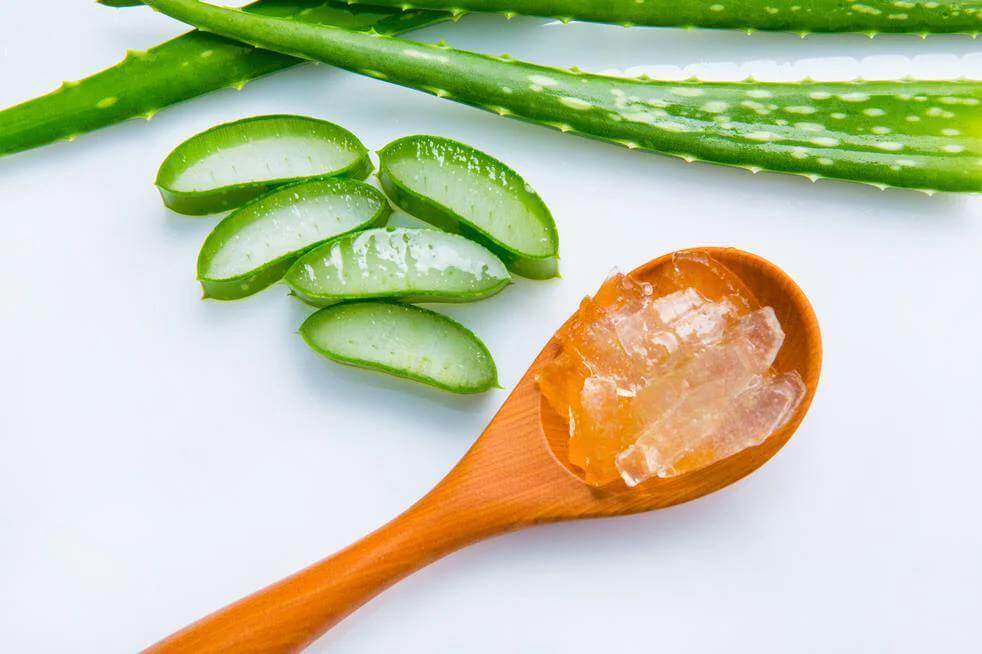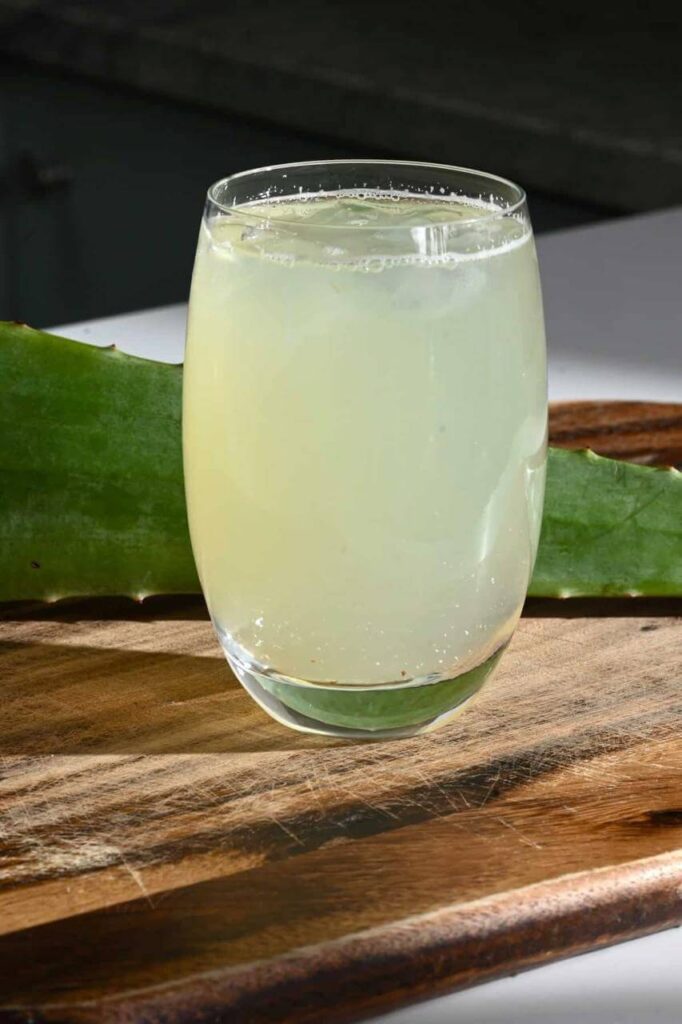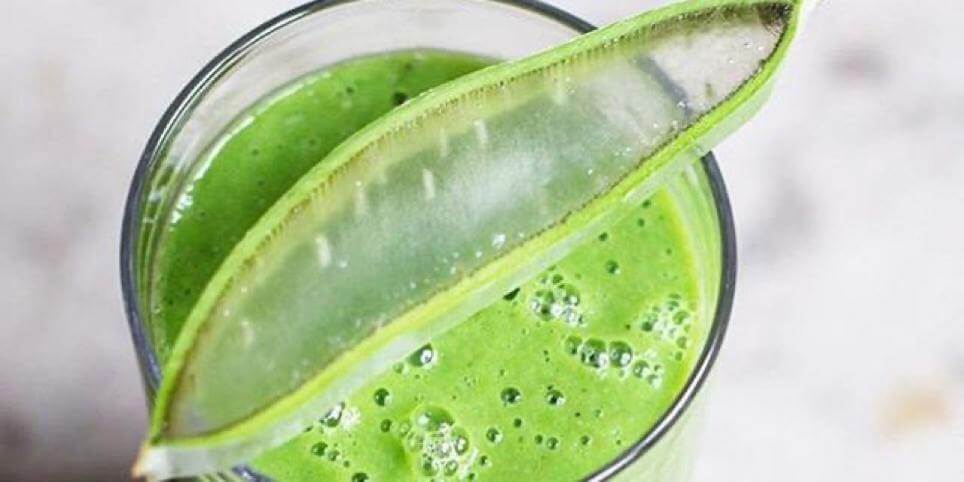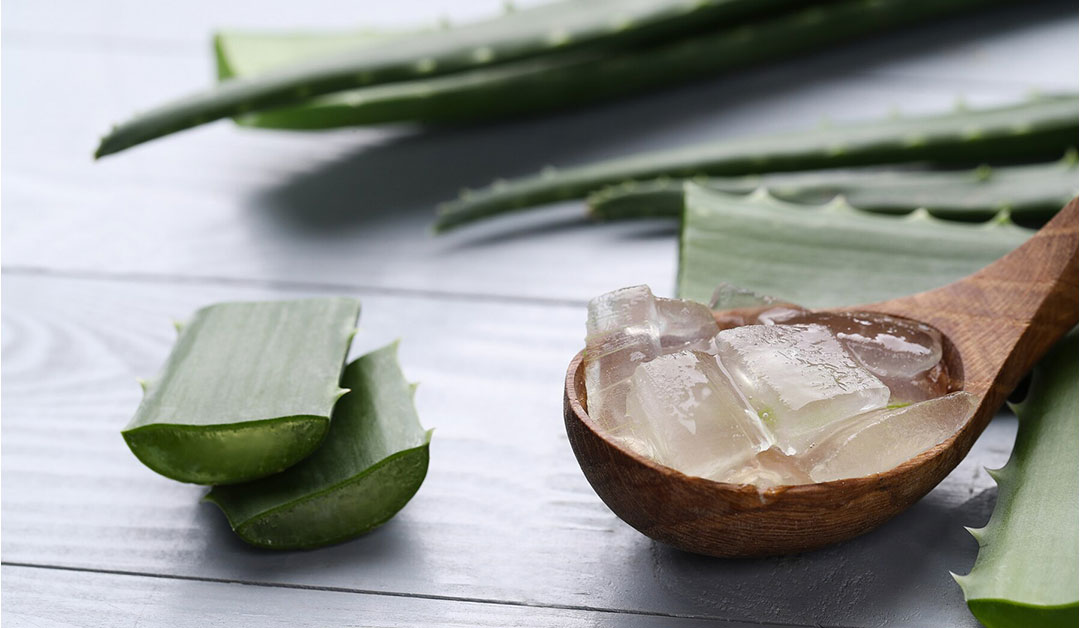Aloe vera is a medicinal plant that thrives in warm climates, such as California, New Mexico, and the Caribbean. It contains over 75 active ingredients, including enzymes, amino acids, vitamins, and minerals, some of which may make it useful for treating various ailments. Modern research suggests that the aloe leaf offers numerous health benefits due to its rich vitamin and mineral content. Some people use aloe vera gel as a home remedy to treat burns and other skin conditions, as well as to promote wound healing. But can the aloe vera juice be consumed internally as well? In this article, we’ll discuss the applications of aloe vera: its benefits, properties, and homemade recipes.
The aloe vera juice is also touted as a natural remedy for diabetes, heartburn, and irritable bowel syndrome (IBS). There is some research suggesting that it may be effective for these and other conditions, but additional studies and higher-quality research are needed to confirm these benefits. Nevertheless, we can still reap the rewards of consuming aloe vera, as its composition is truly unique.
Which Aloe Vera to Use?
Use the Aloe vera barbadensis Miller variety.
This variety is often also advertised as the most beneficial. Even without the name, you can recognize it by its thick, wide, fleshy leaves. The leaves grow vertically, and the plant produces yellow flowers.
The non-edible variety of aloe vera is called “Chinese,” so if you plan to consume it, don’t choose that one!
Edible aloe vera can also be found in some grocery stores and markets in Latin America. If you find it in the produce section, it’s a safe, food-grade variety.
The Aloe Plant has Three Main Parts:
- Skin:
Although there is not a significant amount of compelling research on the consumption of aloe vera skin, the general consensus is that it can be safely consumed. The texture is comparable to celery or cucumber skin. Just remember to wash this part thoroughly if you plan to eat it, as the exterior may be contaminated with pesticides. - Gel:
The aloe vera gel is safe to consume, raw or cooked. It has a clean, refreshing taste, so it is often added to some sauces and smoothies. Aloe vera gel is rich in nutrients, containing over 200 essential vitamins, minerals, and antioxidants. It also contains amino acids and enzymes that aid digestion and nutrient absorption. - Latex:
The latex is the yellow sap or resin in the inner skin of the aloe vera leaf. It contains compounds like aloin, which have natural laxative properties. This layer is inedible and should not be consumed.
Chemical Composition of Aloe
This variety of aloe contains 200 to 300 elements and their compounds:
- Vitamins A, B, C, E.
- Macronutrients (Mg, Na, K, Ca, P).
- Micronutrients (Cr, Cu, Fe, Mn, S, Se, Zn).
- Anthraquinones (colorants, laxatives).
- Anthraquinone derivatives (antiseptics, anti-inflammatory).
- Aloynes (intestinal peristalsis stimulants, analgesics).
- Saponins (hemolytic activity stimulants, secretion, hypotensive and diuretic).
- Salicylic acid (antiseptic, anti-inflammatory).
- 8 essential amino acids.
- 9 non-essential amino acids.
Aloe leaves are 90% water, and they are rich in enzymes and sugars. This is why they are often used for cosmetic and medicinal purposes.
Aloe Applications: Cosmetic Properties
The benefits of aloe vera are diverse, as this plant-based remedy contains chemical compounds that reduce skin swelling, relieve redness and flaking, soothe itchy skin, and promote the growth of new skin cells. These properties make aloe vera useful for treating various skin conditions, such as:
- Acne
- Herpes (cold sores)
- Cuts and scrapes
- Insect bites and stings
- Minor burns and sunburns
- Psoriasis
- Aloe vera has antibacterial and anti-inflammatory properties that can help with acne.
The antibacterial and anti-inflammatory properties of aloe vera make it beneficial for treating burns. Applying a layer of aloe vera to minor burns and sunburned skin can help the skin heal faster, reduce redness, itching, and pain, according to research. Aloe also helps prevent burn infections.
Potential Applications and Effects of Aloe
What are the potential health benefits of aloe?
- Aloe for Cholesterol: This plant extract may help lower unhealthy low-density lipoprotein (LDL) cholesterol and triglycerides, while increasing beneficial high-density lipoprotein (HDL) cholesterol, which is good for heart health.
- Aloe contains substances (such as barbaloin) that act as laxatives. Barbaloin increases the amount of water in the intestines, which can ease bowel movements and help move digested food through the intestines more easily.
- Some studies suggest that aloe vera juice may help lower blood sugar levels in people with diabetes and prediabetes. Researchers say that compounds in aloe vera may help restore damaged pancreatic cells that produce insulin, the hormone that helps control blood sugar. Aloe may also help cells respond better to insulin.
- Aloe for Reflux: Reducing inflammation in the esophagus and decreasing stomach acidity. One early study found that aloe vera syrup worked as well as reflux medications.
- Irritable Bowel Syndrome (IBS) causes symptoms like diarrhea and abdominal pain. IBS has been linked to an imbalance of good and bad bacteria in the gut. Aloe may help with IBS by improving this balance and reducing inflammation in the intestines.
Aloe Vera Risks
Consult a doctor before using aloe vera.
Aloe vera gel is safe for topical application. Oral consumption may also be safe if you use the proper dose and take it for a short period.
Potential Side Effects
- Topical application of aloe vera may cause skin irritation and hives in people sensitive to it.
- Ingesting large doses of aloe latex may cause abdominal pain, kidney damage, and electrolyte imbalance.
Who Should Avoid It?
- Don’t apply aloe vera topically to open or deep wounds. People with allergies to garlic, onions, or tulips are more likely to be allergic to aloe. If a rash develops, stop using the aloe gel.
- Don’t take aloe vera internally if you have diabetes and are taking blood sugar-lowering medications. Aloe may lower blood sugar too much.
- Avoid this supplement if you have nausea, abdominal pain, or diarrhea, as it may worsen these symptoms.
Using Aloe
- Cut off the base and tip of the leaf, as well as any sharp, serrated edges.
- Soak the leaf completely in water to allow the latex to drain out.
- Wait until the water turns a murky yellow color.
- Change the water until it runs clear.
- Gently slide a knife between the skin and the gel, separating them. You’ll be left with a sticky, translucent gel, similar to the inner part of a grape.
- Rinse it until it loses its mucilaginous texture.
- It’s ready to use.
Aloe Vera Recipes
What homemade aloe vera recipes can you make?
1. Aloe Vera Recipes: The topical gel should be stored in a glass jar and used within 2 weeks, but if you want to keep it longer, you can freeze it for up to 6 months.

2. You can make frozen aloe vera ice cubes and use them as a skin treatment, either by wiping it on your face or adding it to water.

3. Aloe Vera Juice Recipes: You can make aloe vera juice by blending it with lemon and orange juice.

4. Aloe vera can be added to smoothies.







0 Comments